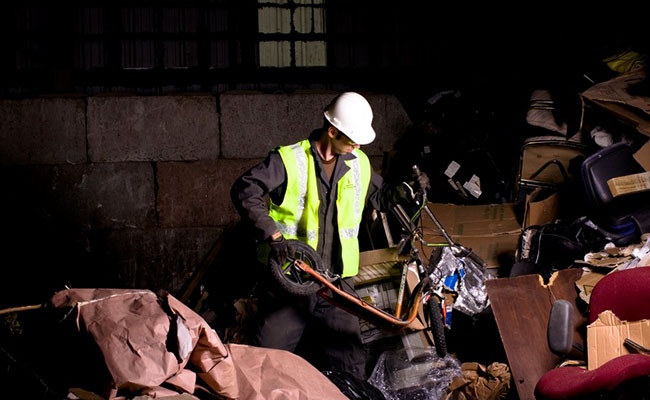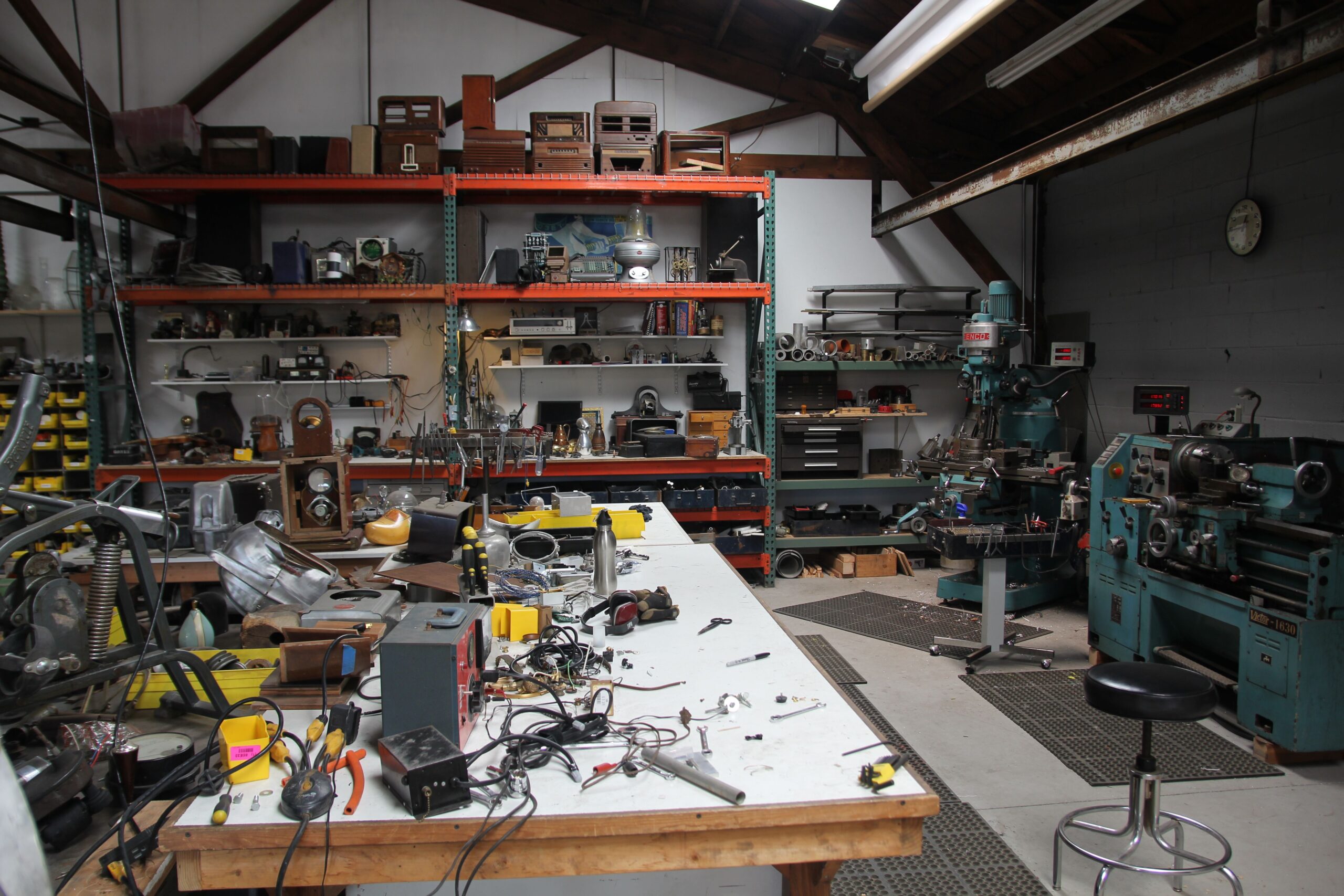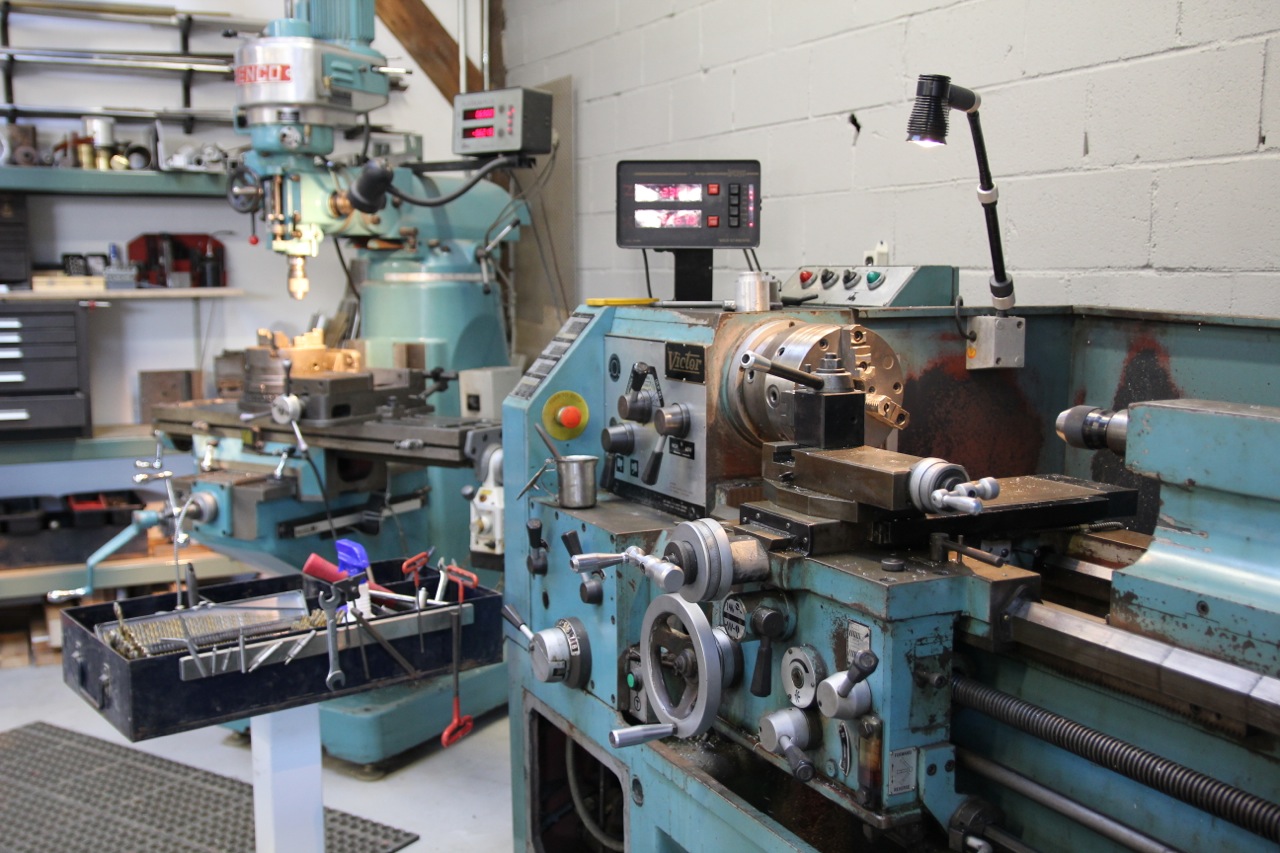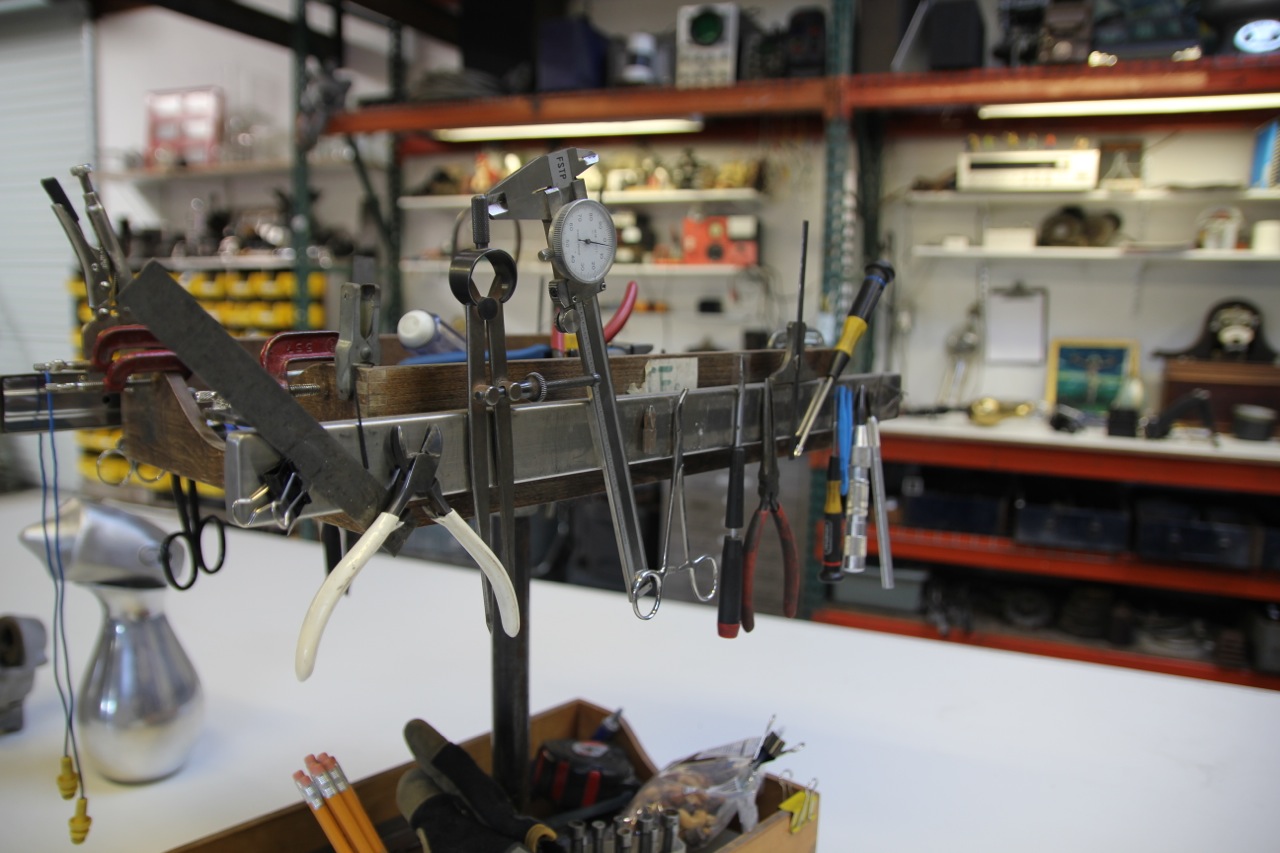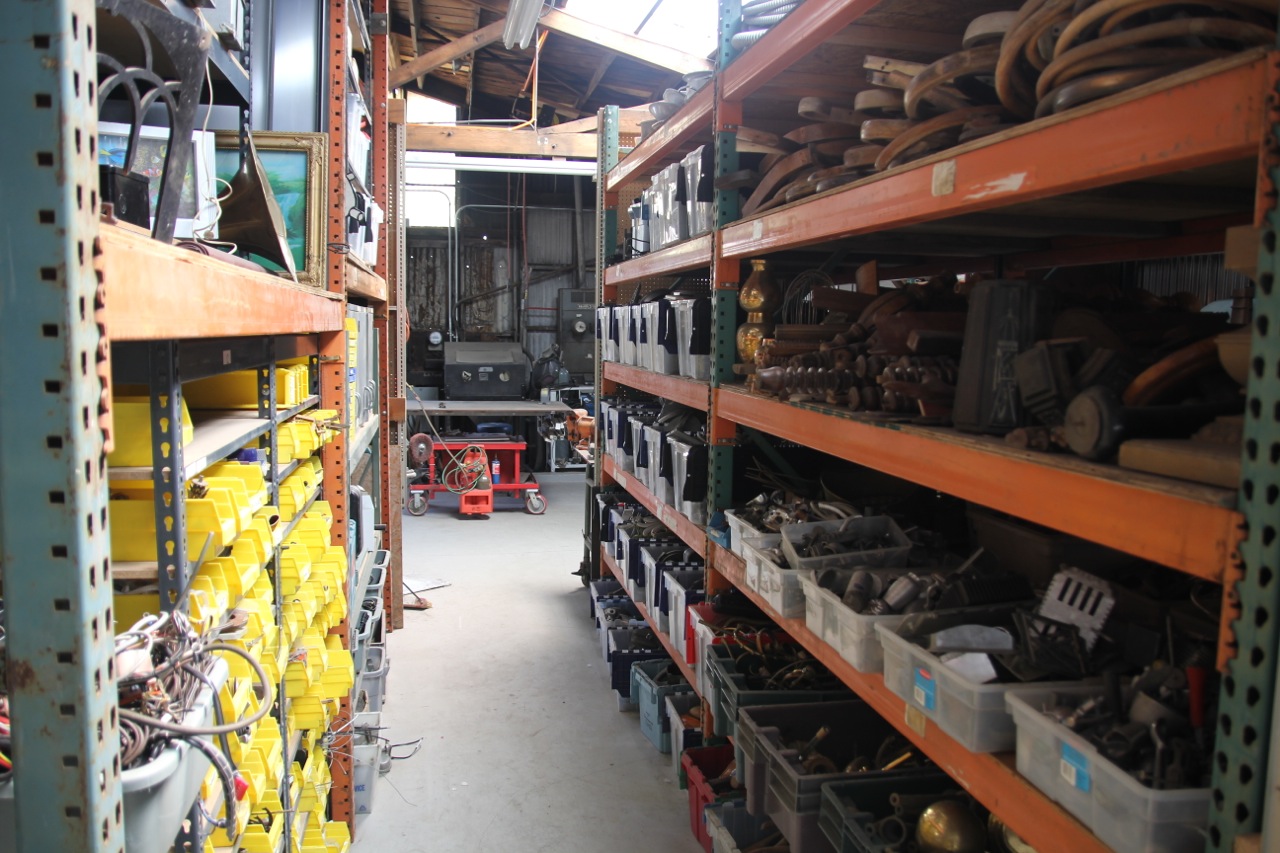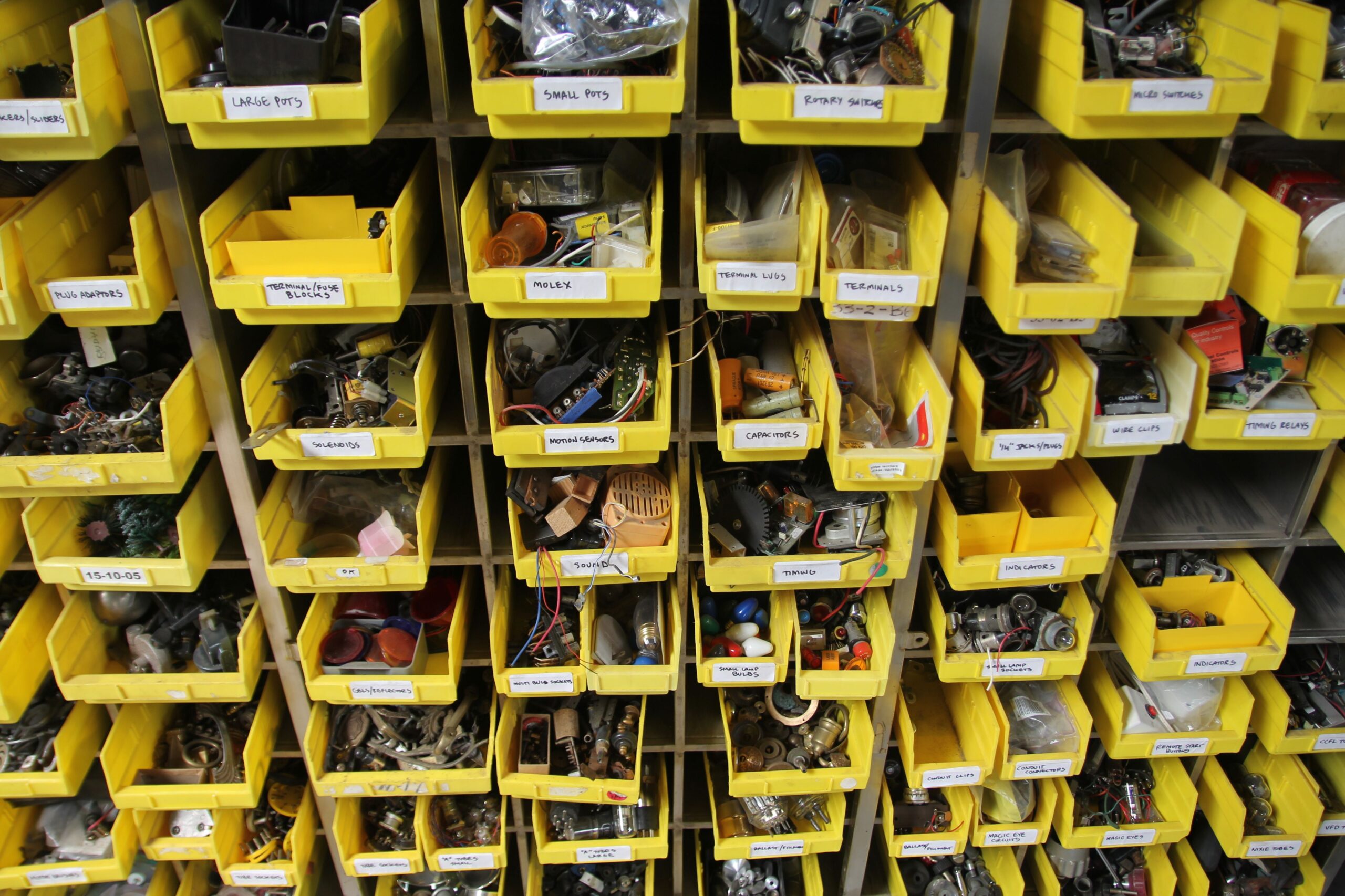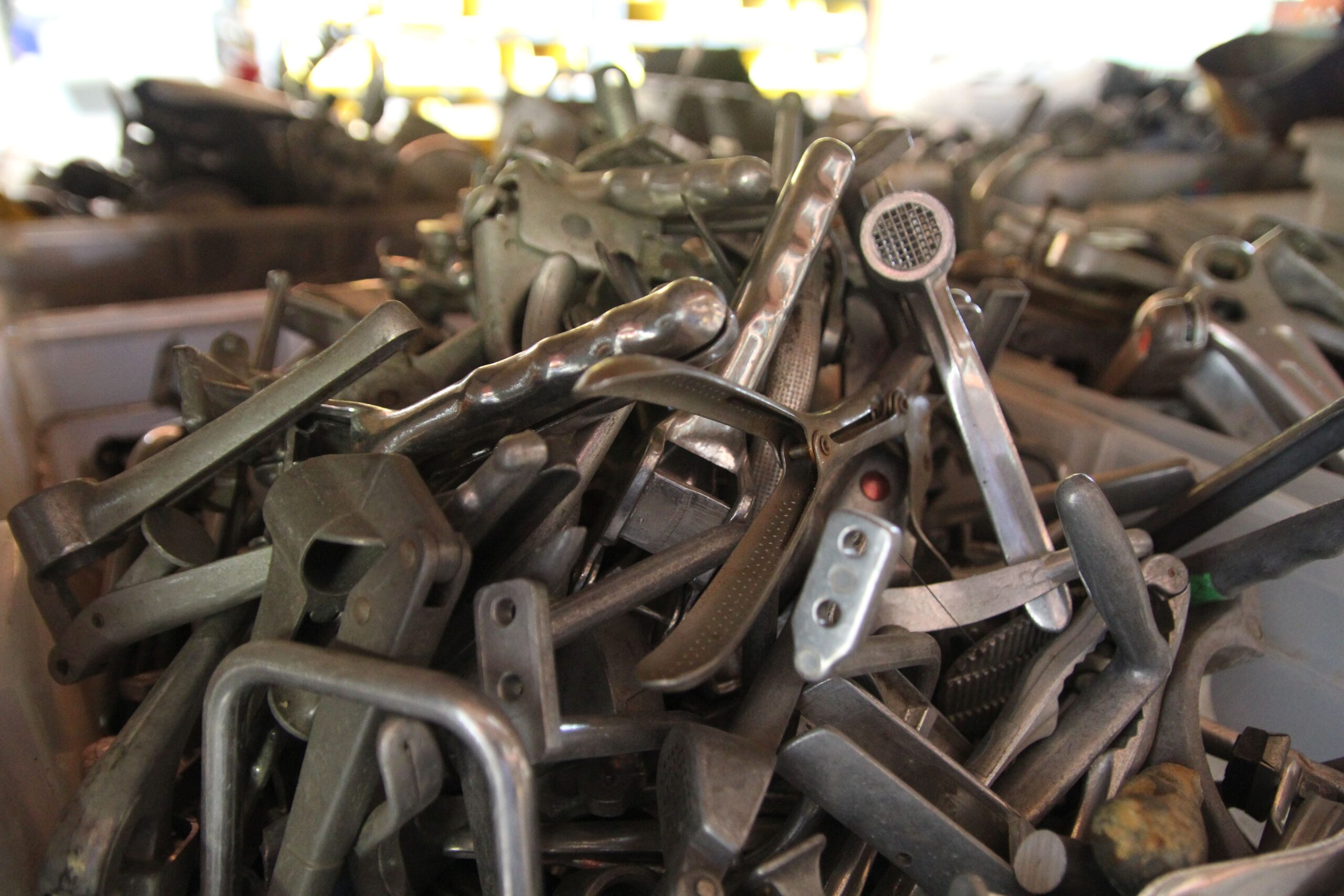Process
Since the vast majority of work on this site is the product of found and salvaged materials I thought I should take a moment to elaborate on this process. While each sculpture takes quite a while to produce, a nearly equal amount of time is spent searching for “raw” materials. By this I mean salvaging from scrap metal yards, second-hand stores, and dumpsters. All of this material then needs to be taken to the studio, cleaned, stripped of unusable material and sorted for later use. The system for organization is a key to the success of the work. To all you fellow hoarders out there: If you don’t know what’s buried under that pile of crap in the corner, then it’s just garbage.
Due to the wide range of objects at my disposal, I have found it necessary to develop a number of skills not often associated with art making. You will notice an abundance of aluminum objects for example. These sculptures are formed by TIG (Tungsten Inert Gas) welding many found elements together and then sanding out the seams. Contrary to how these finished objects may look, I do not cast any raw metal. As my interests have developed I have expanded my process to include other materials like wood, cloth, and brass. With each new material comes new challenges. Much of the wood needs to be stripped of old stains and varnish and resurfaced again. Holes need filling, cracks need mending, and often missing parts need to be re-made from other scraps. My desire to create more engaging sculptures has driven me to become more familiar with electronics and wiring as well as mechanical engineering and machining. Once again elements of consumer devices are salvaged, repaired and recontextualized into new things.





